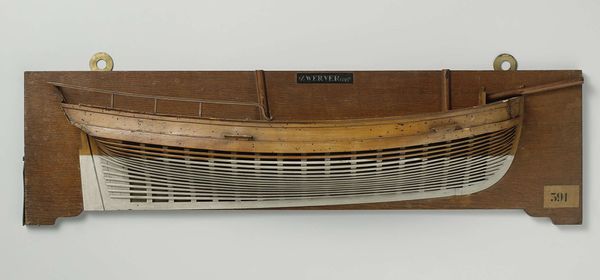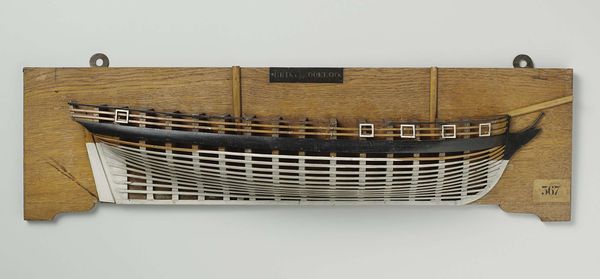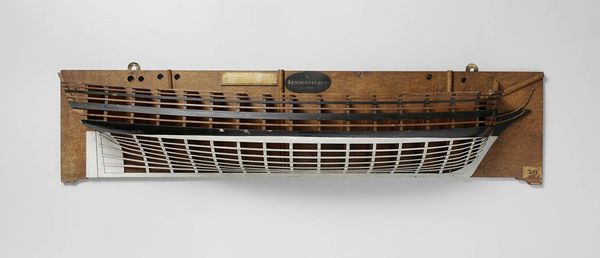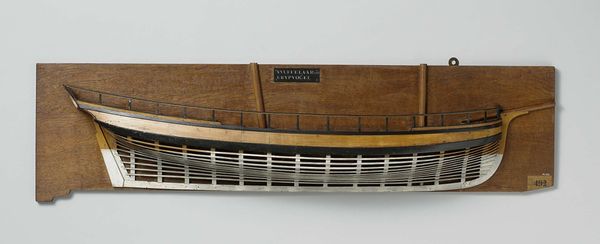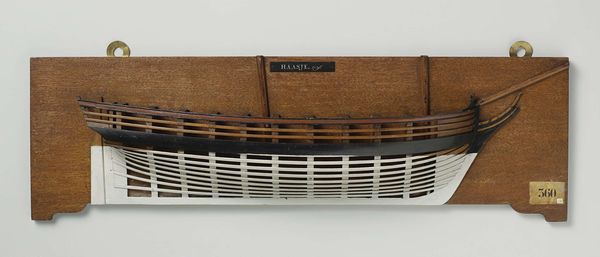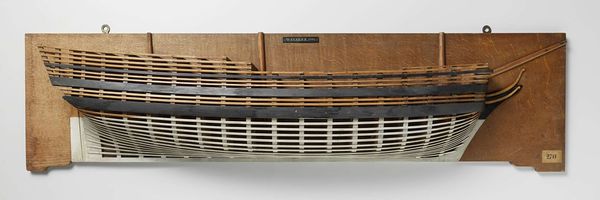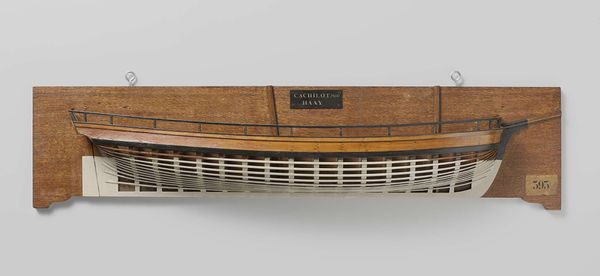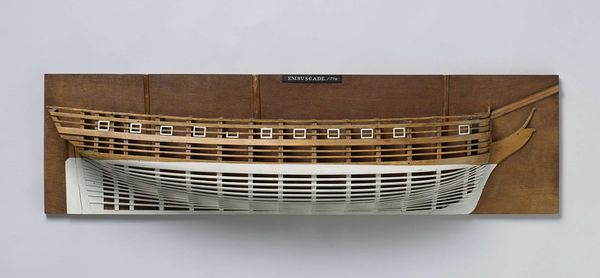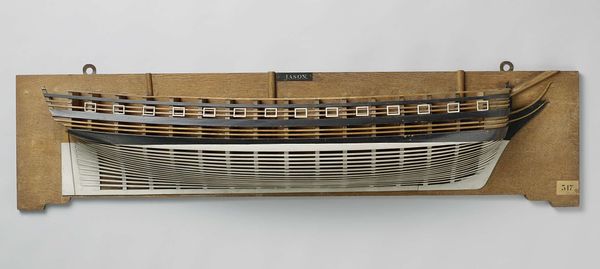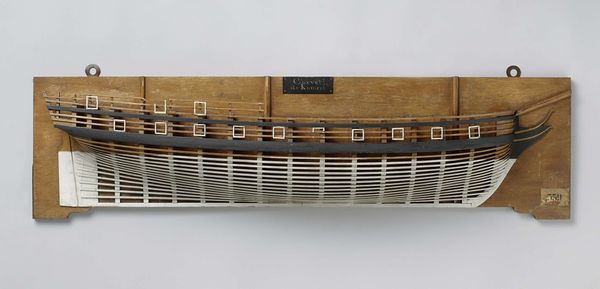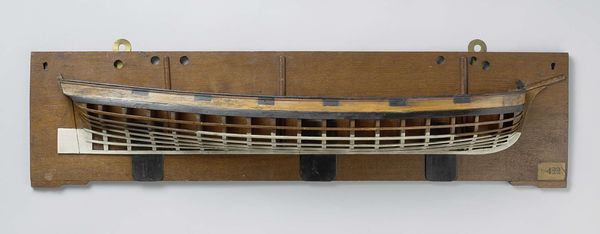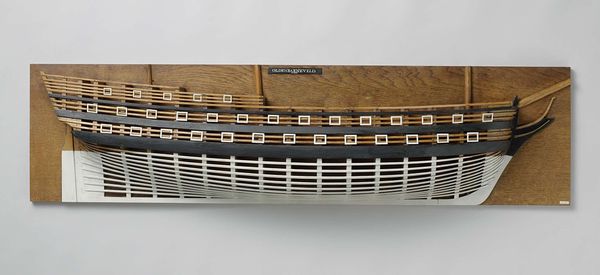
sculpture, wood
#
sculpture
#
wood
Dimensions: height 26 cm, width 81.9 cm, depth 11.8 cm
Copyright: Rijks Museum: Open Domain
Editor: This is a wooden half-model of a yacht, created anonymously sometime between 1780 and 1820. The clean lines and the exposed, almost skeletal, lower half create such an interesting tension between form and function. What strikes you about the structure? Curator: I am intrigued by the contrasting textures. The smooth, opaque hull, against the rhythmic, open lattice that reveals the internal structure. This opposition establishes a dialogue between the exterior presentation and the interior architecture, wouldn’t you agree? Editor: I see what you mean. It’s like the artist wants us to appreciate both the surface and what lies beneath. The unadorned surface also enhances its visual simplicity, despite the construction details. How do you perceive this intentional choice? Curator: The minimal embellishment is certainly purposeful. By stripping away excess detail, the maker directs our attention to the yacht’s essential form—its elegant curvature and balanced proportions. These features define its aesthetic identity, giving an air of seaworthiness that emphasizes speed and agility. Editor: The semiotic qualities are intriguing. Is there anything about the relationship between the physical form of the object and how its materiality further inform each other? Curator: The wood itself speaks of maritime history and the tradition of shipbuilding. The warm tones, as you may see, offer contrast with the cool, structural patterns below. The choice to leave the skeleton exposed serves not just as an aesthetic gesture, but also a celebration of maritime engineering. Editor: I agree; examining the aesthetic relationships present really illuminates the functional aspects of boat construction and also allows me to view this utilitarian object in an entirely new, thoughtful light. Curator: Indeed, by understanding and recognizing the components of line, form, space, color and texture, we’re able to look beyond mere representation. In essence, the formal reading deepens our relationship with both the object, and maritime construction traditions.
Comments
No comments
Be the first to comment and join the conversation on the ultimate creative platform.
